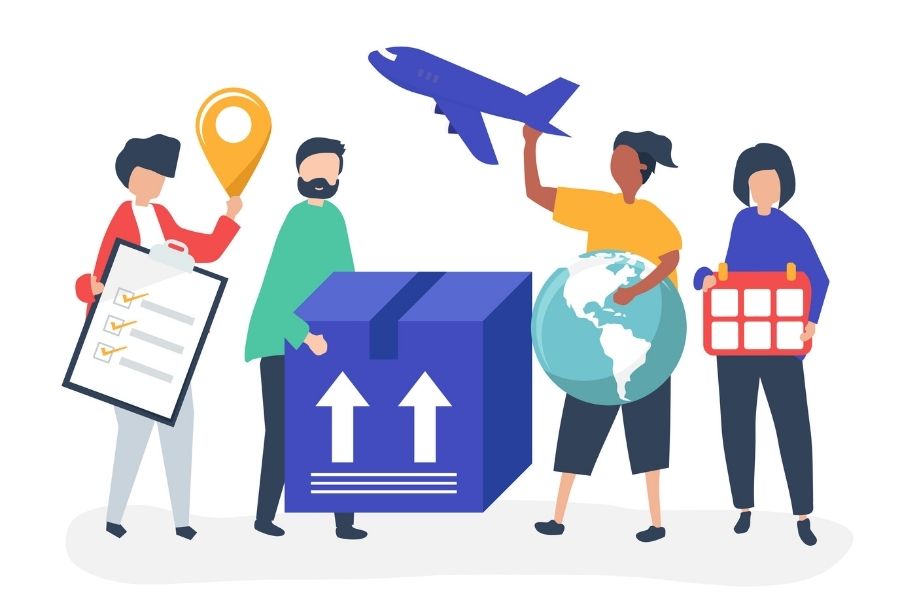The eCommerce migration trend is reshaping the digital landscape, prompting businesses to transition to modern platforms to meet evolving consumer demands. This trend encompasses various aspects, including omnichannel strategies, mobile commerce, social commerce, headless commerce, and AI technology. In this article, we delve into the significance of this rising trend and its profound impact on businesses.
What Is E-Commerce Migration?
E-commerce migration refers to the process of moving an online store or e-commerce platform from one system or platform to another. It involves transferring the entire e-commerce infrastructure, including product catalogs, customer data, order history, and other relevant information, from the existing platform to a new one.
E-commerce migration can occur for several reasons, such as upgrading to a more advanced platform, switching to a different provider with better features or pricing, or consolidating multiple online stores into a single platform. It may also be necessary when a company undergoes a rebranding or restructuring that requires a new e-commerce solution.
This migration requires careful planning and execution to minimize disruptions to the business and ensure a smooth transition for customers. It is often undertaken with the help of e-commerce experts or development agencies to ensure a successful migration process.
E-commerce Site Migration Statistics
According to the Deloitte Retail Industry Outlook survey, a significant majority of respondents, accounting for 67%, identified e-commerce and online shopping platforms as their company’s top investment priority. The eCommerce migration trend was driven by the recognition of ongoing issues associated with old and outdated platforms that are hindering business operations.
The growing urgency to migrate to modern e-commerce platforms is strongly correlated with the increasing percentage of internet users regularly engaging in online purchases. The e-commerce market is expected to reach a staggering $7.4 billion by 2023. To keep pace with this rising demand and the eCommerce migration trend, businesses are actively seeking cloud-based and Software-as-a-Service (SaaS) e-commerce solutions that offer a range of benefits.
These modern e-commerce solutions empower businesses to enhance scalability, improve user experience, expand payment options, optimize checkout processes and conversion rates, boost site speed, and simplify overall maintenance. Recognizing the significant impact of these factors on customer loyalty and sales performance, companies are keen to leverage the advantages provided by advanced platforms.
The eCommerce migration trend has brought to light the fact that migrating to a new e-commerce platform can indeed be a costly and time-consuming undertaking. The expenses associated with migration should not be taken lightly. However, businesses can effectively manage both the financial investment and the time required for the process by carefully devising and executing a well-thought-out migration plan.
In the context of the eCommerce migration trend, migrating to a new platform offers long-term benefits including improved performance, increased sales, and enhanced customer satisfaction. Despite the initial costs, businesses can position themselves for success by embracing modern platforms and the opportunities they bring in the rapidly evolving ecommerce landscape.
The 5 Biggest E-commerce Migration Trends And Their Impacts
Omnichannel
The omnichannel is eCommerce migration trend that has gained significant momentum in recent years. It involves creating a seamless shopping experience across multiple channels, such as online marketplaces, mobile apps, social media platforms, and brick-and-mortar stores.
By integrating various touchpoints, businesses can provide customers with a consistent and personalized experience throughout their buying journey. This trend has a profound impact on customer satisfaction, loyalty, and overall sales performance.
Mobile Commerce
With the increasing use of smartphones, mobile commerce has become a dominant force in the e-commerce industry. Mobile devices account for a significant portion of e-commerce traffic, and businesses are adapting to this trend by optimizing their websites and apps for mobile devices.
Mobile-friendly interfaces, smooth navigation, and convenient mobile payment options are essential for capturing the attention of mobile shoppers and driving conversions. Neglecting mobile commerce can result in missed sales opportunities and a diminished user experience.
Social Commerce
Social commerce refers to the integration of e-commerce functionality within social media platforms. It allows businesses to showcase and sell products directly to users on platforms like Facebook, Instagram, Pinterest, and more. Social commerce leverages the power of social networks and their vast user bases to facilitate seamless product discovery and purchase. By utilizing social commerce, businesses can tap into the growing trend of social media-driven purchasing behavior and enhance their online sales.
Headless Commerce
Headless commerce is an architectural approach that decouples the front-end presentation layer (the “head”) from the back-end e-commerce functionality. This separation enables businesses to deliver content and shopping experiences across various channels and devices while maintaining a consistent backend infrastructure.
Headless commerce is ecommerce migration trend that allows for more flexibility, scalability, and faster innovation by enabling the integration of new technologies and touchpoints. It empowers businesses to adapt to changing customer preferences and deliver highly personalized and engaging experiences.
AI Technology
Artificial Intelligence (AI) has revolutionized the ecommerce industry. It has enabled businesses to leverage machine learning algorithms and data analysis to gain valuable insights, automate processes, and personalize customer experiences. AI technology powers recommendation engines, chatbots, virtual shopping assistants, and advanced analytics tools.
These capabilities enhance product recommendations, customer support, targeted marketing campaigns, and overall operational efficiency. By harnessing AI, businesses can deliver highly relevant and personalized experiences that drive customer engagement and increase conversions.
Overall, embracing the five e-commerce migration trends of omnichannel, mobile commerce, social commerce, headless commerce, and AI technology is crucial for businesses to stay competitive, enhance customer experiences, and drive growth in the ever-evolving e-commerce landscape.
During the migration process, a critical step to elevate the performance of the new platform is changing the point of sale (POS) system. In this regard, ConnectPOS is an ideal solution. It has the capability to integrate with all platforms and stands out as the only POS that directly integrates with Commercetools. By leveraging ConnectPOS, businesses can seamlessly transition their POS system, ensuring a smooth migration experience and unlocking the full potential of their new e-commerce platform.
Conclusion
The eCommerce migration trend is transforming the digital landscape, empowering businesses to enhance competitiveness and drive growth. With omnichannel strategies, mobile commerce, social commerce, headless commerce, and AI technology, businesses can adapt to evolving consumer demands and optimize customer experiences. The rising wave of e-commerce migration promises a dynamic future for online commerce. If you want to know more about these trends, feel free to contact us.
►►► See our products: Magento POS, BigCommerce POS, Shopify POS, Woocommerce POS, NetSuite POS, Commercetools POS, Custom POS, White label POS, Customer Experience Solution and Next-Gen POS




